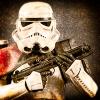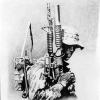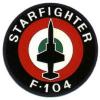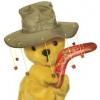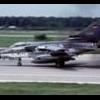Search the Community
Showing results for tags 'Hornet'.
-
I started this model in "Hornet STGB" but failed to finish in time http://www.britmodeller.com/forums/index.php?/topic/234941171-aussie-special-bug/ Three weeks are hopefully enough to get her finished. This is what I have at the moment:
-
DeHavilland DH-103 Hornet HpH 1:32 The twin-engine Hornet fighter was designed to Specification F.12/43 and the first prototype flew on 28 July 1944. It entered production at the end of 1944 and deliveries were made to the RAF from February 1945. Four versions were produced for the RAF as: the Hornet F.1 medium-range single-seat fighter with four 20mm cannon and provision for carrying two 450kg bombs or two 455 litre drop tanks; Hornet PR.2 long-range unarmed photographic reconnaissance aircraft; Hornet F.3 long-range single-seat fighter with the increased fuel tankage of the PR.2; and Hornet FR.4 with a vertically mounted camera. More than 200 were built. The Hornet was the fastest twin piston-engined operational combat aircraft in the world while in service and the first aircraft to demonstrate a cartwheel manoeuvre. Operated in Malaya in the early 1950s, the type was finally withdrawn from service in 1955. The Model With the disappointing news of the withdrawal of the 1:32 Westland Whirlwind fighter from their prospective new releases HpH came back with stunning news that they were to release the beautiful DeHavilland DH 103 Hornet instead. Still in 1:32, this news was greeted with great enthusiasm by the modelling world. The kit was rand eleased just before SMW at Telford, even though it is quite an expensive kit, from what I could see it was being snapped up. We at BM are lucky enough to have to opportunity to review one of my all time favourite aircraft, even if it is RAF colours. The kit comes in a very sturdy cardboard box, on top of which are two side views of the two colours schemes provided within the box. On opening the divided interior is full of grey resin, either separate, as per the larger parts or in poly bags for the numerous smaller bits. There are also three sheets of what look like etched nickel, a set of fabric seatbelts, paint masks and quite a large sheet of decals. The instructions are provided on a CD which when printed out are in full colour and very nicely laid out. The diagrams and parts placement are very clear and easy to read, which is a good job really, as there are a lot of parts in this kit. Before building there is a lot of cleaning up to be done. Not only is each part attached to a casting block, but there are large areas of the wings, such as flap and aileron positions, filled in with thin resin, as is the cockpit opening, and wing openings in the fuselage. A large number of the smaller parts are moulded on thin resin sheets from which they need to be cut out. Other than that there is no real excess flash and the moulding does look very nice indeed, with fine panel lines and rivets where required. There has been quite a bit of web chatter about the dimensions of the kit and it is generally agreed that the kit is very nearly spot, being within 0.5mm of what it should be, which, given the variable shrink rates of resin is about as good as it can get. The one fly in the ointment is the nose join with the windscreen and canopy. Even in the box the nose does look ever so slightly screwy and there does appear to be a slight discrepancy in the shape of the nose fairing where it joins the windscreen frame. This is quite an awkward fix, but it can be done as shown in a build thread on BM. That being said, I think if the kit is built out of the box with no alterations it will still look fantastic and impress anyone who views it. This kit will be the subject of a build review on here as soon as I get some time in-between other duties on BM and life in general. Once all the parts have been removed from their moulding blocks and the superfluous resin removed from the wings and fuselage, and had a good wash in warm soapy water you can start construction. The build begins with the wings and the fitting of the front and rear radiator faces, carburetor intake doors, which can be fitted in either the open or closed position depending on the whether the aircraft is flying or on the ground. The front and rear spars are then attached and wings closed up and finished off with the fitting of the clear navigation light lenses. The lower wing roots are then joined together along with the front spars, creating a single piece wing. Before the fuselage is closed up the tail wheel assembly is constructed put of the bay roof, front bulkhead, tailwheel and oleo which is fitted to the forward roof part. The completed assembly is then fitted in position in the right hand fuselage. The two fuselage halves are then glued together and the wing passed through the openings at an angle to slide through the fuselage, then straightened up and glued in position. Construction of the superbly detailed cockpit starts off with the starboard side panel and the fitting of the numerous handles, brackets, trim wheels, switch panel and its separate switches. The port panel is then assembled with the addition of switches, canopy handle and placard. The side consoles are also assembled with resin consoles, PE panels and additional switches. The main instrument panels are also in resin with the with the pre-painted PE instruments fitted to the back. The complex seat brackets are next, attached to the rear bulkhead then fitted with the four seat supports onto which the seat with its separate bag pad, PE seat adjustment handle bracket and resin handle attached. The assembly is completed using the fiddly, but very worthwhile cloth seat belts with their PE fittings. The cockpit floor is the fitted out with several PE items and the rear cockpit bulkhead is attached to the floor. Before the cockpit floor and bulkhead can be fitted into the fuselage the rear cockpit shelf needs to be slid into position. On this shelf there are two resin boxes with their associated PE tops and fittings and the oxygen bottle. With the shelf in position the cockpit floor is then slid into the nose of the fuselage and glued into place. The port and starboard cockpit panels are then attached followed by the side consoles. The rudder pedals and control column/joystick are then assembled and glued into place followed by the instrument panel and centre console, cockpit coaming and a beautifully detailed gunsight made of resin and etched parts along with a clear reflector glass, which is then attached to the top of the instrument panel. Finally the seat and bulkhead assembly is fitted to the attachment points on the cockpits rear bulkhead. At this point the instructions call for the windscreen and canopy to be fitted, but it’s probably best to leave this till a later stage, although there is a set of masks for hte windscreen and canopy should you wish to added them at this stage. Construction then turns to the rear empennage which consists of the two horizontal tail planes, separate elevators and trim tab linkages, along with the tailplane and separate rudder and again an etched trim tab linkage. The rudder and elevators require short lengths of wire to attach them to their respective parts. Wire is also required to attach the horizontal tailplanes to the fuselage with short lengths fitted to the rear of the join and a long length which passes through the fuselage onto which the tailplanes are fitted. With the airframe almost complete the build moves on to the engine nacelles. Each half of the nacelle is fitted with the exhaust stubs, from the inside, the main wheel bay forward bulkhead is then attached and the nacelles closed up. The two propellers consist of the four blades, propeller spinner, and two metal tubes which connect the propeller to the hub. The completed propellers are then fitted to their respective engines and the completed nacelles are attached to the wings, along with the radiator flaps, intakes grilles and the internal ribs for each flap bay and the pitot probe, although this could be left till later to prevent breaking the thing off. The main undercarriage legs are then assembled, each consisting of the main oleo, scissor link, support arm, and when fitted to their respective bays the retraction jacks are attached. The main wheels are made up of the wheel with separate inner and outer hubs and are then attached to the axles of each oleo. To finish off the bays the doors are fitted with their retraction jacks and attached to their respective positions on the nacelles. Each of the inner and outer flaps are assembled using the outer skins, inner hinges and a length of wire. If keeping to the instruction sequence the next operation is the construction of the weapons and drop tanks each of which can be fitted as per the modellers preferences. The 500lb bombs consist of the main body, separate tail and PE tail ring and are attached to the mounting pylon by PE crutch plates and crutches. The rockets are made up form a metal tube, turned metal head, PE tail fins, PE mounting clamps, mountings and supports. The drop tanks consist of the large resin moulding, onto which two etched rings are fitted to the top and side of the nose. They are then attached to their pylons ready for attachment to the wing. Also in this instruction sequence is the attachment of the trim tab linkage to each of the ailerons. The flaps, choice of weapons and ailerons are fitted to their respective positions on each wing. Decals The moderately large decal sheet contains markings for two aircraft, along with enough stencils for one. The options are:- • DH 103 Hornet F.3 of 33 Sqn RAF, Tenga and Butterworth, Malaya, 1951 – 1952 in Dark Sea Grey and Dark Green over Medium Sea Grey. • DH 103 Hornet F.Mk1 of the Commanding Officer 19 Sqn RAF, Church Fenton, Yorkshire, U.K. July 1950 in Medium Sea Grey over PRU Azure Blue The decals are very nicely printed, in good register and nicely opaque, they are semi-gloss and with little carrier film so they should settle down well with the modellers choice of softener and setting solutions. Conclusion It has been a long time coming and even then it came as a bit of a surprise, but it’s been well worth the wait. The nose and canopy problem will probably defeat all but the best or most fastidious of modellers who will be able to rectify this, but out of the box I imagine that most people looking at a completed model won’t be able to notice. Being mixed media though it will pose some challenges to those who haven’t built in resin and the like before, but if taken steadily and carefully, a superb model can be built. If you love the Hornet you shouldn’t be too disappointed with this release and it will look great in anyones collection. Highly recommended Review sample courtesy of
-
Having cancelled its 1/32nd Westland Whirlwind kit ( http://www.britmodel...mp;hl=Whirlwind ), HpH has started a new project: a 1/32nd de Havilland DH.103 Hornet resin kit. Source: http://www.hphmodels.cz/kat163.html V.P.
-
Hi all, So going to give another 1/144 a shot. Did the F-14D Super Tomcat last time round, so now giving the F/A-18E Super Hornet a go. Started it a while back so there will be a bit of an update now. This is the kit: Came with what looks to be a pretty good set of decals for one of the VFA 31 "Tomcatters": Also decided to give a resin aftermarket seat and cockpit from RetroWings a go. Very small with much detail! Cleaned it all up and here are the sprues and cockpit: A couple of comparisons between the original seat and cockpit and the RetroWings equivalents. So much more detail - maybe too much for such a small scale? Still, it looks pretty good. These are primed with Vallejo Ghost Grey primer and cleaned up a little to remove excess resin: And the cockpit: Too much on the seat maybe - but looks pretty good all together Painted using Mr Color and Tamiya paints: Once the cockpit was done, the rest (so far!) came together pretty quickly: I decided this time to put most of it together and then paint it (last time I painted most parts before assembly). I also used Tamiya's Extra Thin Cement - much better for this small scale and holds together well (not a lot of weight in this one!). The cement also helped fill some gaps. The rails are now on and it's ready to start some gap filling and the rest of the painting: More to come soon I hope!
- 2 replies
-
- hornet
- tomcatters
-
(and 2 more)
Tagged with:
-
Built for the Hornet group build. Ace Corporation = Revell mould with different decals Build thread
- 4 replies
-
- 1
-

-
- Ace Corporation
- F/A-18
-
(and 3 more)
Tagged with:
-
Good evening to all! I'm glad to present my last work... an F/A-18 C of VFA-87 during the Operation Iraqi Freedom. Hasegawa kit to start... I also added the following aftermarket: Aires cockpit, wheel bays and exhaust. Wolfpack Design F-18 A+ & C early update set. Legend Production fuel tanks (the Hasegawa's tanks has minor shape problems). Royale Resin wheels. Rhino Models seamless intakes. Eduard etched set. Leading Edge masking set. Afterburner decal. Hope you enjoy my Hornet. Cheers! Valerio from Rome, Italy.
- 39 replies
-
- 8
-

-
- Hornet
- Golden Warrior
-
(and 2 more)
Tagged with:
-
I will be building this one... Not sure on the final scheme, the kit has decals for the number 2 & 3 prototypes. It will be built OOB.
-
F/A-18F Super Hornet 1:72 Revell The Super Hornet or Rhino as it's officially known on operations is an evolution of the original F-18, a Hornet on steroids you might call it. Development of the E/F models started in 1995, primarily as a replacement for the F-14 in USN service, however the RAAF has since introduced the aircraft as replacements for its F-111 fleet. Although still officially a Hornet, the E/F models are a largely new aircraft. The airframe is 20% larger, 7000lb heavier empty and 15,000lb heavier fully laden. Carrying an extra 33% fuel load, the Super Hornet has a 50% greater endurance too. Despite being larger, it also has an incredible 42% less structural parts than its predecessor and 35% additional power. One of the most noticeable features is the squared intakes designed to reduced its head on radar signature by scattering the radar waves more efficiently than the earlier rounded ones. Its not just the airframe thats been radically upgraded, the avionics have been too. Controlled by a quadruplex FBW system, it also monitors the aircraft for battle damage and makes corrections where necessary. Internally, the latest aircraft use an APG-79 active radar that allows simultaneous air and ground attack capability. It has and advanced FLIR and various threat detection and counter measure systems that can be used in combination with external jammers. With current production orders, the USN will have 515 E/F models delivered when the last order is completed and the RAAF will of had 48 delivered. Despite the significant investment for both the USN and RAAF, the F/A-18 is seen as an interim aircraft until the availability of the F-35. The kit Following on from the F/A-18E kit, the F model is in very much the same style but with the addition of a second crew station. Typical of Revells current style, you get the open ending box. On opening the pack, youre presented with four light grey sprues and one clear one as well as an A4 instruction sheet and the decal sheet. The main rival for this kit is the Hasegawa and each kit has their merits so Ill touch on them throughout. Assembly starts with the cockpits. Unlike the Hasegawa kit, the cockpits do have some surface detail to the panels, so you have the option to sand this off and apply the decals supplied or paint it. The ejection seats come in 3 parts and have moulded in seatbelts and side framework, again better than the rival kit. With the pits assembled and placed into the lower fuselage, effort is turned towards the intakes. Again, this area is better than the Hasegawa kit in terms of internal profile, the intakes are nicely shaped and backed by the engine compressor rather than being void. Surface detail on the fuselage and wings is in my opinion, a little overdone and comparing the two kits, the Hasegawa one looks slightly more refined. On the Revell kit, the addition of rivets to the panel lines looks a little excessive, however this will probably improve once primed and painted. The main wheel bays are very nicely detailed. If you really want to, you could add additional plumbing in there, but theres enough detail to make it interesting. With the cockpits and intakes fitted to the lower fuselage, the top half is then attached followed by the nose cone. I believe that the nose on the Revell E model is a little thin and less accurate than Hasegawas version, whether this has inaccuracy has been carried over to the F, its difficult to see until its been assembled. The tail panes are connected through the rear fuselage so they can be adjusted to suit the angle you desire. The wings inboard of the wing fold are moulded integral to the fuselage with the outer sections being attached separately, unfortunately they cant be fitted in the folded configuration without some work by yourself. Also the flaps and moveable surfaces (other than the tailplanes) are fixed, so again, theres no option to show them in the parked drooped state. Moving on to the exhausts and undercarriage. The exhausts are adequate. The plastic is rather thick so Id be tempted to thin the plastic out to give it a more accurate scale thickness. The undercarriage has plenty of detail and a wash will really bring this out after painting. One of the great features about Revell kits in general is the abundance of ordnance that they include in their kits and this one follows suit. The following is included in the kit: Aim-9x Sidewinder x2 AIM 120C AMRAAM x2 HARM x2 Mk83 Iron Bomb x2 Wing tanks x2 Centreline tank AN/ASQ-228 Advanced FLIR pod The instructions show the various load out options available. The detail in the weapons is quite pleasing, the missile and bomb fins being very thin giving good scale representation. The kit also has the correct 4 degrees of outward sweep to the weapon pylons. Construction of the kit finishes with fitment the clear parts, various antennas, aerials and boarding ladder which adds a great visual to the displayed kit. The canopy and windscreen are very refined free from distortion. The HUD is rather thick and you may want to replace this with a piece of thin acetate. The decals The decal sheet is designed by Daco and has options for two aircraft: VFA-103 Jolly rogers 200 CAG Scheme 2011-12 NAS Oceana High Vis markings VFA-11 Red Rippers 106 NAS Oceana Low Vis markings With over 180 decals included, the detail is very crisp with more than enough stencils and placards to keep you busy for a week ! Whilst the tails of the jolly Roger scheme need to be painted black, the black area around the cockpit can be dealt with by the provided decals however the windscreen section may require some patience and decal setting solution. Conclusion On the whole, this is a great kit. Compared to the Hasegawa kit, the surface detail is a little heavy, but you get a lot more detail in the pits, better intakes and a good selection of weapons. Couple this with a more favourable price tag and I should imagine its going to sell very well. Construction is fairly straight forwards and with a parts count of 97, shouldnt take too long to build up either. Another great release from Revell. Revell model kits are available from all good toy and model retailers. For further information visit
-
This is my first ever group build entry so I'm just following everyone's lead as far as what to post. This is only my second F-18 model ever, my first being the old Esci 1/72 Leatherneck F-18A I built 25 years ago, I must have a "thing" for Marine Corp Hornets! I picked this one up for £4 a few weeks ago on ebay knowing it was a rebranded Revell kit, I'm just building it OOB but ignoring the instructions "one colour" scheme and doing the correct two colour for this aircraft. The build will be simplified a little with the wings and tailplanes already "bolted" to the upper fuselage. The cockpit is nice and busy for this scale. The detail on 1/144 kits these days is quite stunning... When the manufacturers put their minds to it. The decal sheet is fantastic for this scale, I'm blown away by the viking!
- 35 replies
-
- Ace Corporation
- F/A-18D
-
(and 2 more)
Tagged with:
-
While looking for the two F-18/EA-18's boxes I came across my stash of F-18C's and F-18D's. While the other scheme for the Revell F-18C didn't catch my eye, the other one for the F-18D did. So I thought "screw it" and I am adding it to the mix, I've got a Matchbox F-18A on the way, so I may do that yet, depends how the decals turn out. I will be doing the VFA-125 "Rough Riders" example. Onto the pictures... For once revell have actually put the FS numbers on, not their stupid mixing system. And there we go, my other build, I may add some more to this mix... dunno yet... Kind Regards, Dazz
-
Hello all, Here is my dual build I started on here back in November as an WiP (clicky linky thready). Was my first use of resin, not too sure if I like it or not yet. I had a lot of trouble with F-18D with the varnish going tits up and "frosting", possibly the weather, possibly a dodgy can most likely my lack of skills. I tried to put a wash on it, but it was wiped away when I went to clean it. I'm guessing the panel lines where not deep enough. On to the pictures! Model : Revell F-18D Hornet VMFA-224 "Bengals"... Scale : 1/144 Decals : Kit ones Paints : Vallejo and Humbrol primer Extras : RetroWings F-18 "legacy" control surfaces kit and RetroWings F-18 Cockpit I missed that massive patch of wash on the horizontal stabilizer, and typically didn't notice until the varnish had been put on and dried... go figure... Bugger... missed that arrestor hook too... not having much fun with this one eh? I've left it glossy, because I didn't wanna mess up the varnish again... Model : Revell CF-188A (F-18C) Hornet No. 410 Squadron, Cold Lake CFB Scale : 1/144 Decals : Kit ones Paints : Vallejo, Mr Hobby, Tamiya and Humbrol primer Extras : RetroWings F-18 Cockpit, Flory Models wash. I took a tip from JMChladek and used Tamiya smoke paint in the wheel wells to give them a bit of definition. Kinda like what the result was, guess I will just need to learn what I like by thinning it down a bit. Least the arrestor hook is painted in this model Thank you for looking, be as brutal as you like. Kind Regards, Dazz
-
Well I started these two as I was waiting for the primer on my Puma to dry and kinda forgot the Puma entirely as I was enjoying these two too much. I'll start with the boxes There is two schemes on this plane, I will be going the one on the box cover which is for the 20th Anniversary of the Canadian Air Force from Cold Lake. The plans for it, not much to put here. Next is the other scheme. Now as CAG schemes go, I actually like this one I dont usually like CAG schemes for some reason. And a shot of the sprues, both models have the exact same sprues just a different coloured plastic used. As you might of noticed the top half of the fuselage has enough room to make the F-18D, there is a little extension part for the CF-18, which you can see just to the right of the canopy. I am loving those Harpoons for some weird reason tho... I dunno... And here is the other model, the two seater version, I've never liked the two seater always thought it looks bulky and ugly. But I really like the EA-18G Growler, I know that technically they are different planes, they still kinda look the same. Anyhow I think the Growler looks cool and I like the name too. I have also purchased the Retrowings upgrades for the F-18. I got the cockpit upgrades and the flaps/folded wings also. Now a thought occurred to me when I was preparing the resin for priming. There's enough parts here to make two cockpits, a single seater and a dual seater. I'm making a single and double seater at the same time, so I call that a result! If you look in the middle of the picture you'll see two curvy bits with a pointy rod thing coming from it? I very nearly cut that off thinking it was waste resin, wasn't until I started to research cockpit colours that I noticed it was the pusher/rod thing that pushes the canopy up. Good job I didn't cut it off! And here is the control surfaces upgrades, not much to write about here. A fair bit of cleaning up to do, but nothing too major or tedious really. Not sure if I am going to use the tail-planes/elevators tho, the kit parts seem okay to me and almost the identical when compared. First job was to mark off what is to be cut from the model on the F-18D, when you look at it like this, there is a lot to be cut away from the model. This is the first time I have ever used resin or cut parts from a model. I was a little nervous about this one. The finished result, plus canopy attachment things. There was a lot cut away from those wings, thank god I only cut what I needed to and sanded down the rest. Took me a while to do, but it was worth doing it this way incase I screwed it up, which thankfully I didn't. I've attached the pilots instrument panel to the F-18D, but as it's pointing this way you can't see any of it. I'll get a better picture of it, if anyone wants to see it?? And the two cockpit tubs attached to the fuselages, the little C/D's are there for me so I do not get confused. From what I have seen of most Hornet cockpits, there isn't much in the way of colours in them, just a light grey and a lighter grey with black/dark grey at the back. Very boring... Better picture of the F-18D's cockpit, the instrument panel for the rear seater was the only part of the kit I didn't like. It was a bugger to determine where it goes as the instructions are next to useless when it comes to what goes where and how. It doesn't tell you what parts to cut off or what to not cut off, maybe I am just being stupid?? Well this is where I am upto as for this evening. Kind Regards, Dazz
-
The box art from the future - very soon ! - 1/32nd Kinetic McDD F/A-18A/B/C/D Hornet kit in on Facebook Source: http://www.facebook.com/photo.php?fbid=138843782949408&set=a.129556723878114.28243.129238860576567&type=1&relevant_count=1 V.P.
-
well as far as my modelling year goes anyway. Here in no particular order are the fruits of my 2012. Not as many as I would usually do, as spent a considerable part of the year constructing the man cave, getting married, honeymooning etc etc Anyway onto the models. Trumpeter 1/48 Sea Fury ...and another!!!!! still with the FAA, the Classic Airframes Gannet converted to a T2, just a nightmare build from start to finish Hasegawa 1/48 Hornet and finally, Hasegawa 1/48 Hurricane IIC not quite making it by the end of the year were the airfix 737, (actually may make it as it being painted at the moment) and another Has. Hornet and hurricane. To all and your families, A very Merry Xmas. A big thanks to those that helped me out with various things throughout 2012, heres to a productive 2013 for all Roll on, that Airfix 48 Javelin (and a gannet would be nice too!! Bruce
-
I have an urge to build a Canadian F-18 Hornet in 1/48 but I'm unsure about what kits I can use. I have seen that there are some CF-188 kits by Hasegawa but they are both very rare and very expensive. I'm not a great authority on the finer details of aircraft but am I right in thinking that the Canadian birds were as the US F-18A's with a search light added somewhere around the nose? So can anyone help me with what options I have, even if requiring aftermarket? I really like the pretty simple examples (ie not brightly coloured anniversary aircraft) as I loved the fake cockpits painted on their undersides. (I plumped for putting this in Cold War as I'm thinking that this would be an early example possibly a German based aircraft. - I'll need to do more research!)




